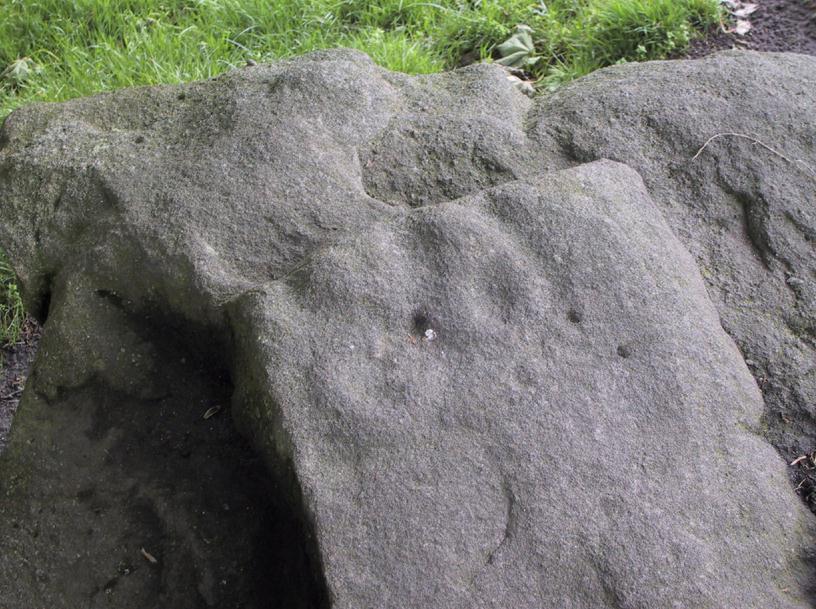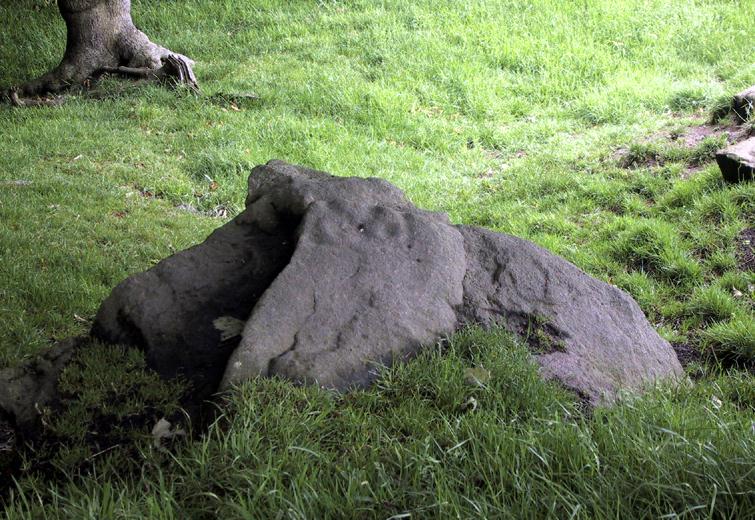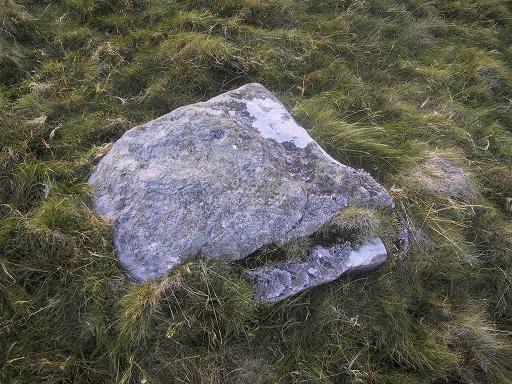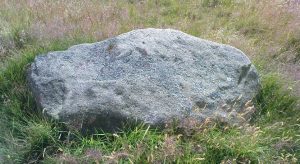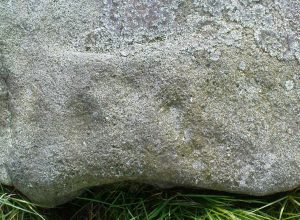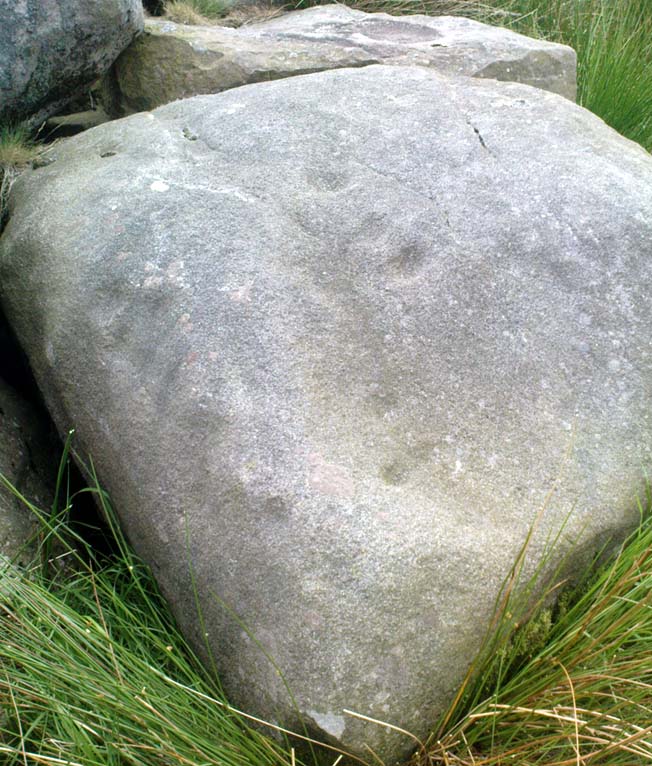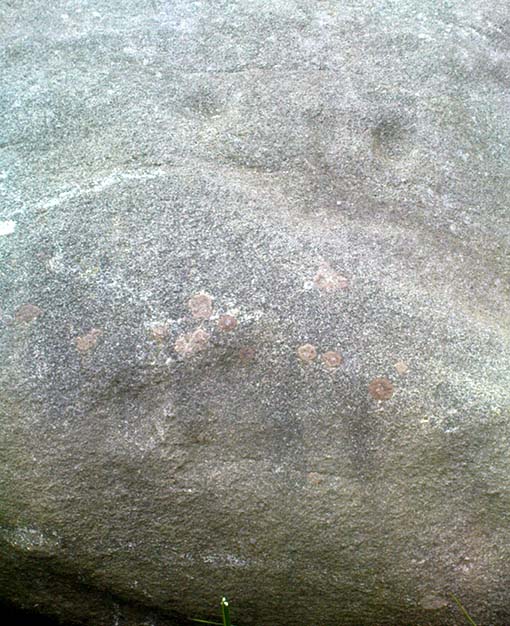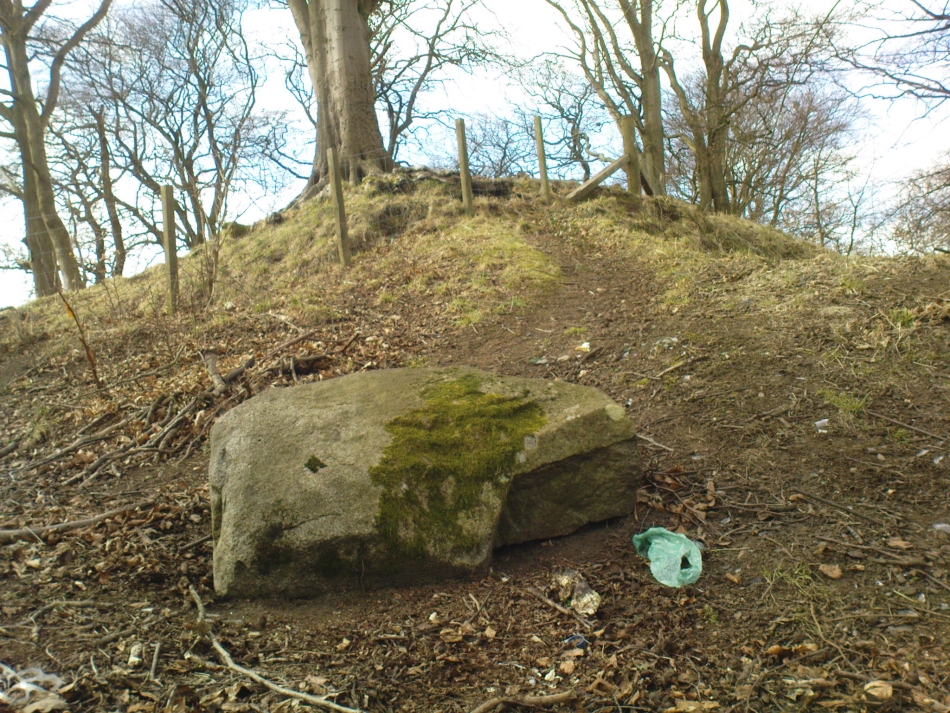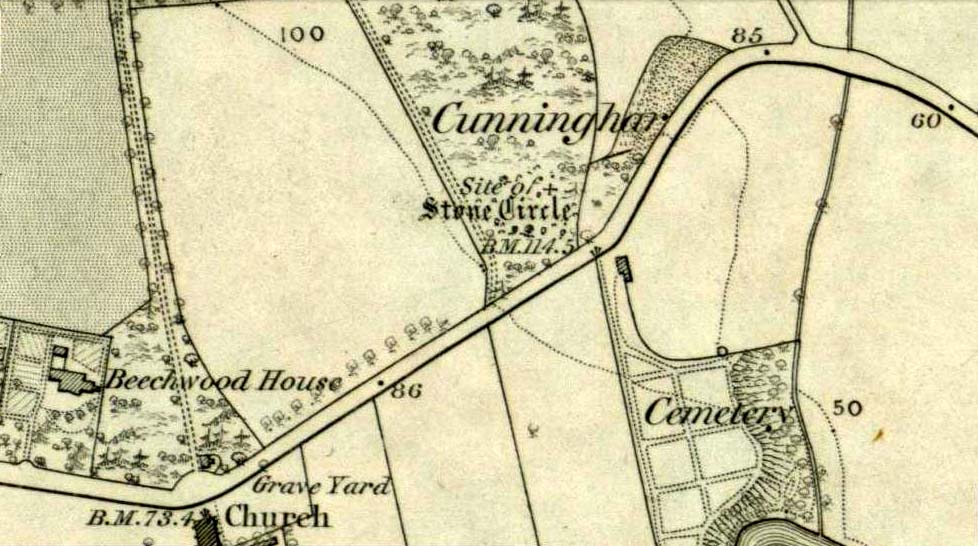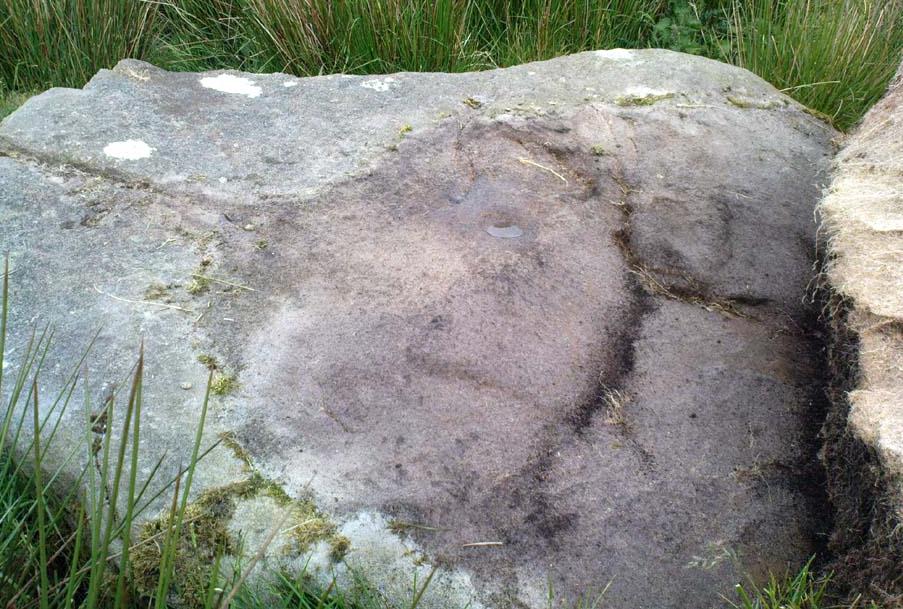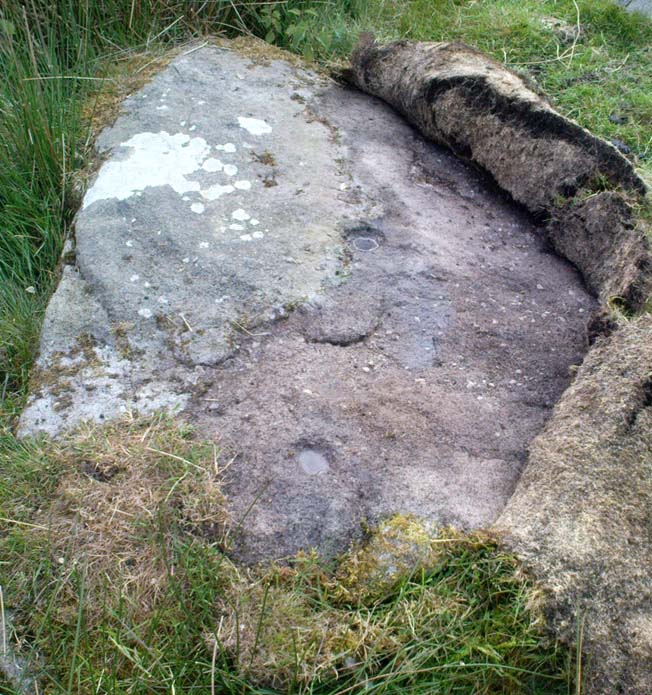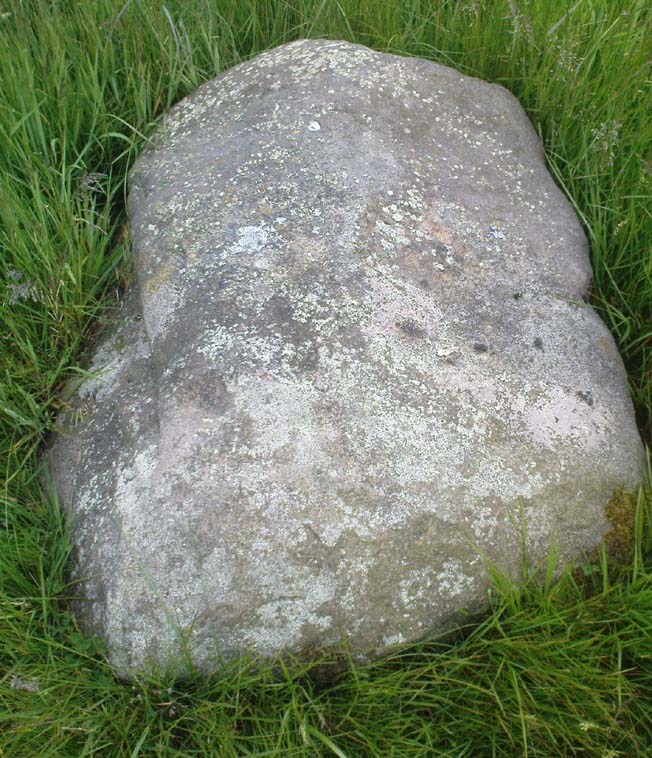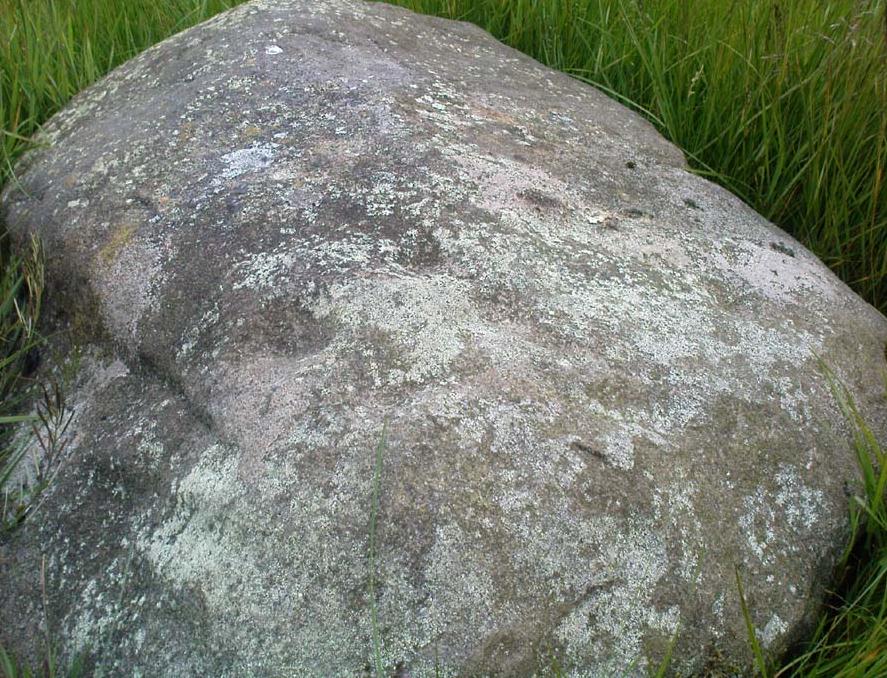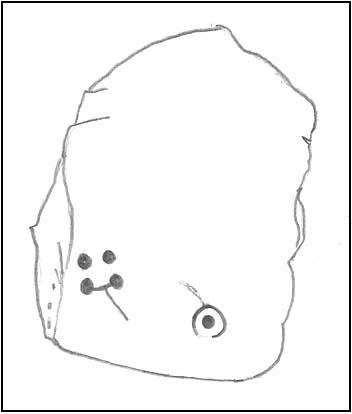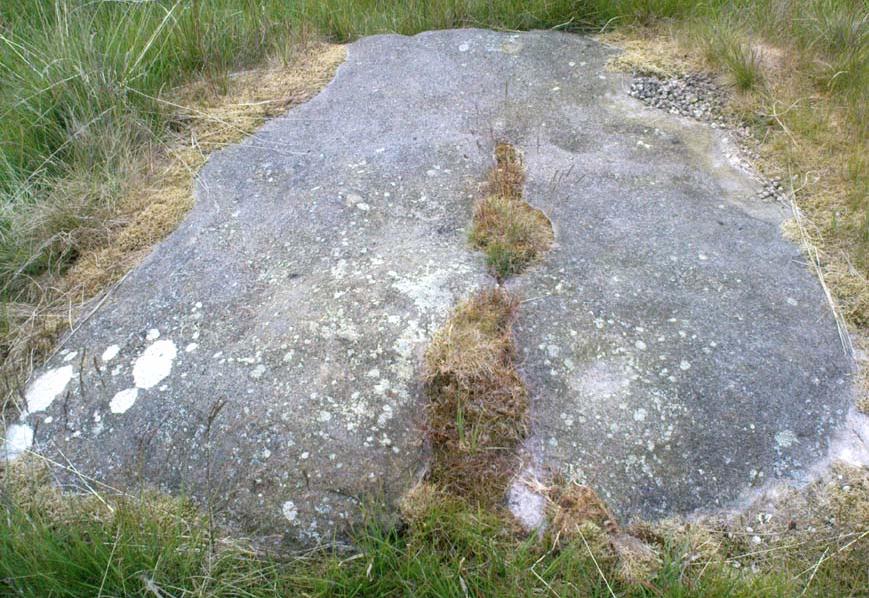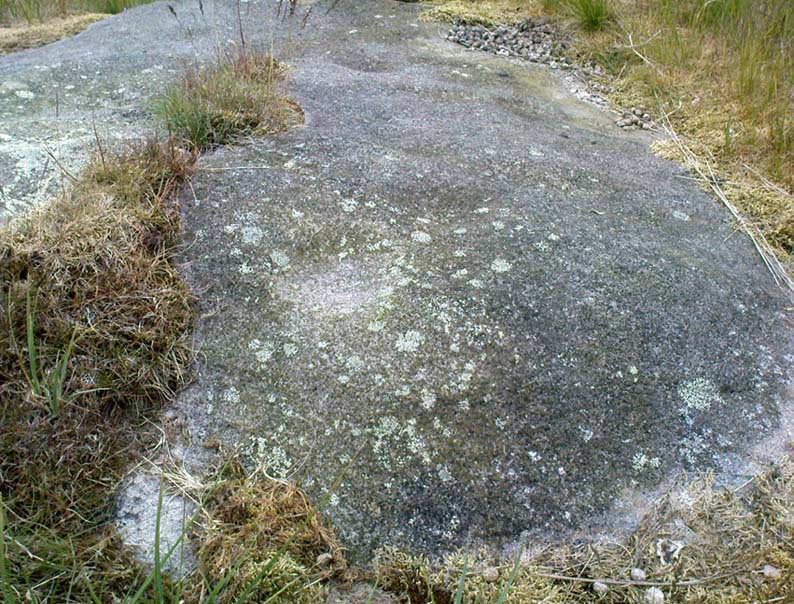Cup-and-Ring Stone: OS Grid Reference – SE 0772 6231
Also Known as:
- Carving no.413 (Boughey & Vickerman)
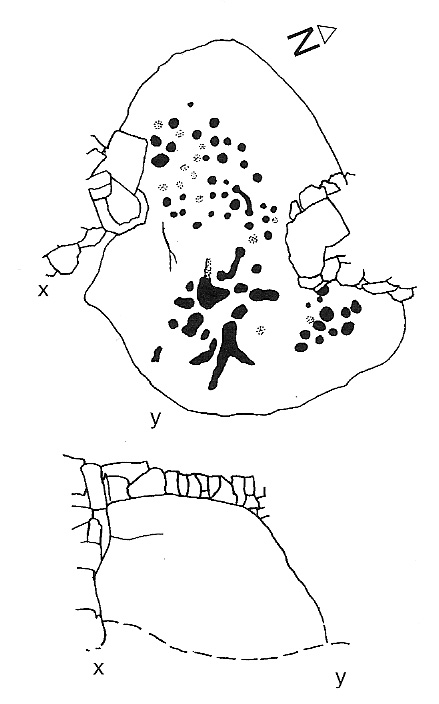
Various ways here, but for the sake of newcomers I’d say it was best following directions from Burnsall. From here, take the Appletreewick road thru the village, past the left turn a few hundred yards along, and another 500 yards or so there’s a split in the road: take the one on your right! Follow this up, keeping right (don’t turn into Perceval Hall, tempting though it may be!) and park-up where the road turns into a track. Walk up the track, past the haunted junction, bearing left uphill up Black Hill Road until you reach the very peak of the track where, in the walling on your left, you’ll see this big boulder. If you can’t see it, you’re bloody close!
Archaeology & History
This is at the very peak of Black Hill Road, with excellent views of Simon’s Seat climbing to the immediate south, the prominent and rounded Nursery Knot Hill immediately north, and grand views to peaks east and west. It is very likely this position had something to do with it being deemed worthy of relevance. The rock itself defines a point along the old boundary line.

One peculiarity on this boulder is the deep cup-mark with a strange ‘lip’ to it, which has been mentioned by others in the past. This is surrounded by at least five others cups — not dissimilar to some of the ‘rosary-designs’ of cup-and-rings further north.
The rock art student’s Boughey & Vickerman’s (2003) drawing of this design is pretty accurate — where they call it stone 413 — though it doesn’t actually give this carving the justice it deserves. They also erroneously tell that some of the cups here are doubtful.
Check it out for y’self. This is an excellent stone for cup-and-ring lovers! (with plenty of other sites scattered about all round here)
References:
- Boughey, Keith & Vickerman, E.A., Prehistoric Rock Art of the West Riding, WYAS 2003.
© Paul Bennett, The Northern Antiquarian
